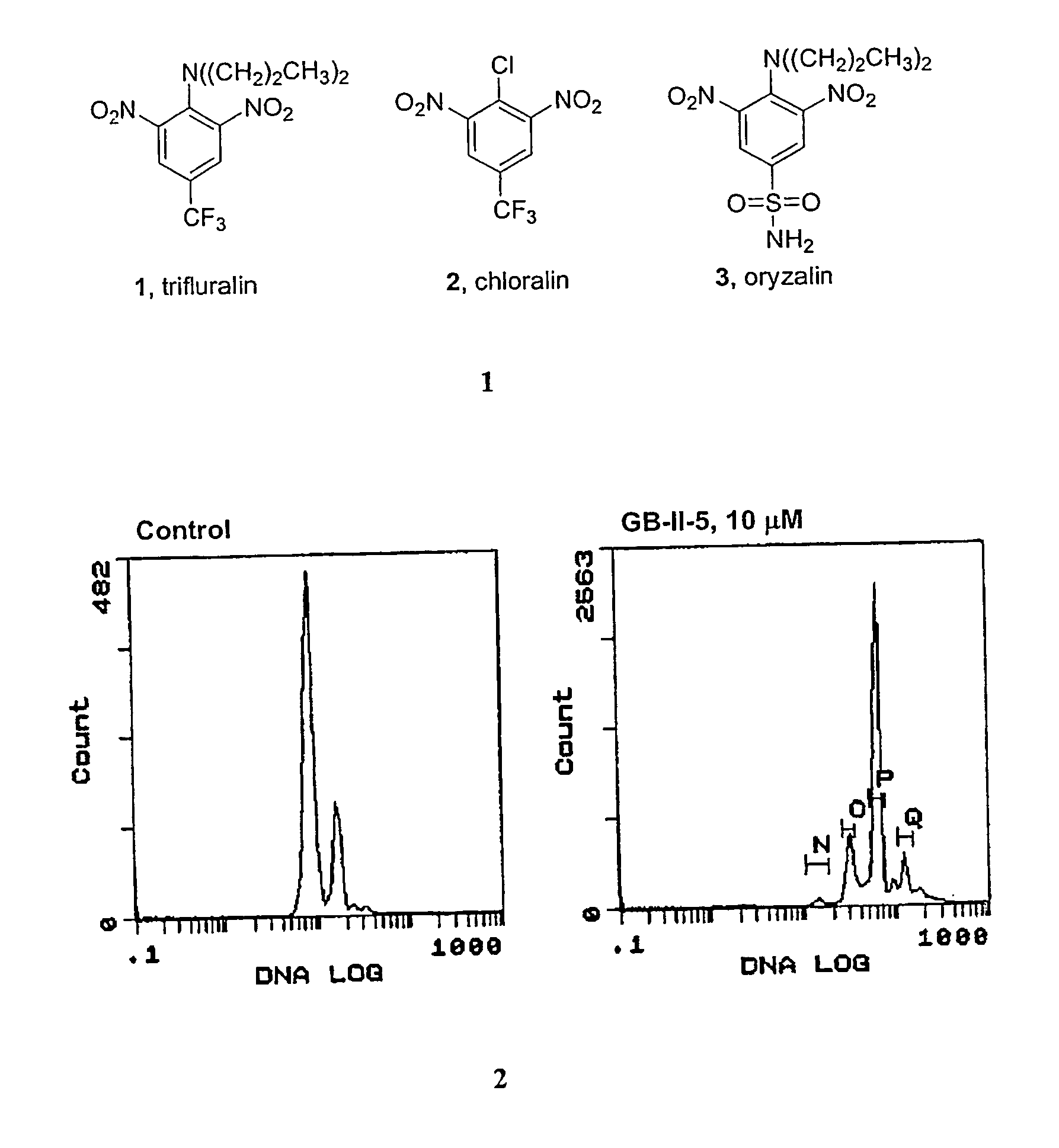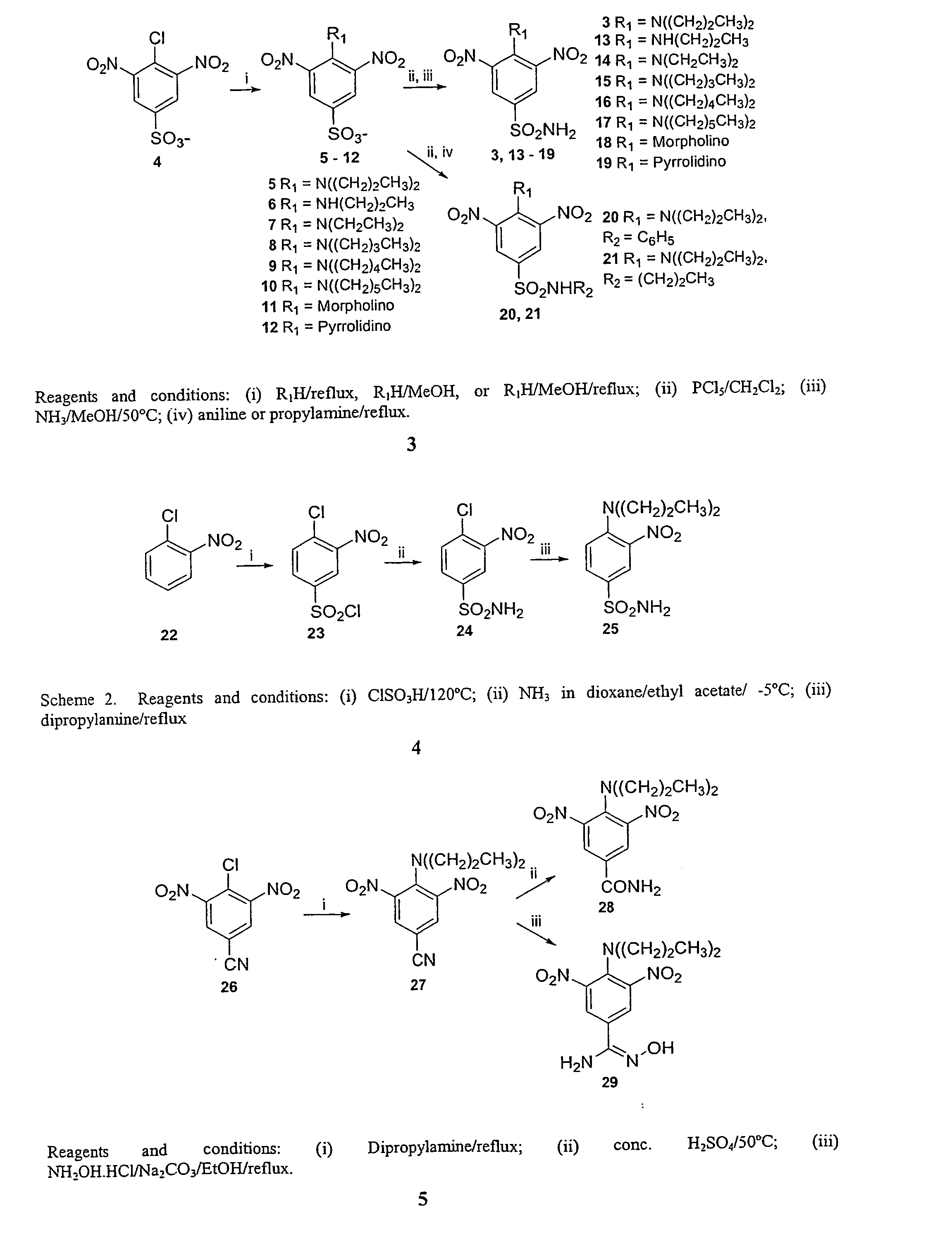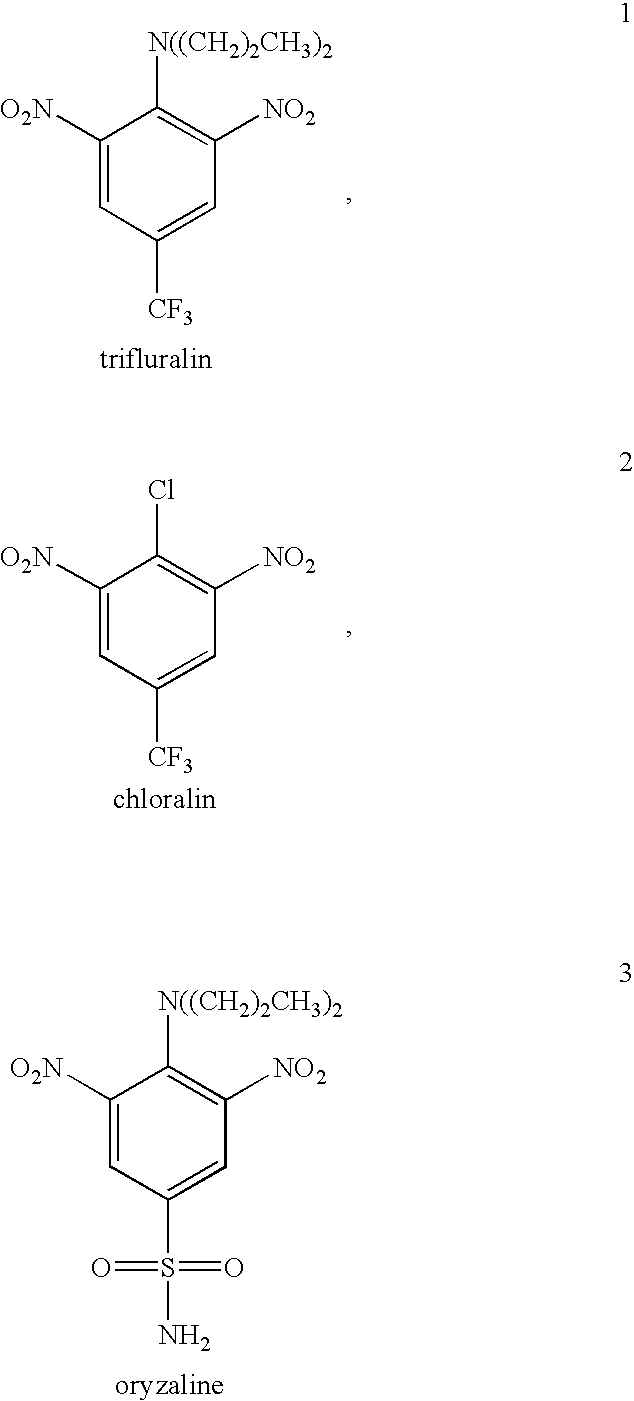Antileishmanial dinitroaniline sulfanomides with activity against parasite tubulin
- Summary
- Abstract
- Description
- Claims
- Application Information
AI Technical Summary
Benefits of technology
Problems solved by technology
Method used
Image
Examples
example 1
Inhibition of Leishmanial Tubulin Assembly for Compounds 3, 13-21, 25, 27-29
[0044] With the desired compounds in hand, we then examined oryzalin and several new dinitroaniline compounds for their ability to block the growth of Leishmania donovani parasites and to inhibit the assembly of purified leishmanial tubulin by methods described previously in Havens, C.; Bryant, N.; Asher, L.; Lamoreaux, L.; Perfetto, S.; Brendle, J.; Werbovetz, K., “Cellular effects of leishmanial tubulin inhibitors on L. donovani,” Mol. Biochem. Parasitol. 2000, 110, 223-236, incorporated herein by reference.14
[0045] Briefly, the tubulin assembly assays are performed as follows. Assembly reactions were performed in 96-well half-area microplates (Costar) in a final volume of 50 ∝L. For both leishmanial and brain tubulin, reactions contained final concentrations of 1.5 mg / mL (15 ∝M) tubulin, 0.1 mM PIPES (pH 6.9), 1 mM EGTA, 1 mM MgCl2, 10% (v / v) DMSO, and 1 mM GTP with and without compounds of interest Co...
example 2
Cellular Effects of the New Dinitroaniline Compounds on Leishmania
We have verified that our new agents act through a microtubule mechanism in the parasites with the aid of flow cytometry and fluorescence microscopy.
[0050] Flow cytometry and fluorescence cell sorting. Parasites or J774 macrophages were incubated in T25 flasks (3-5 mL final volume) in the appropriate media described earlier for 24-48 h. Cultures contained 1% DMSO (v / v) in the presence or absence of test compounds. Cells were counted using a hemacytometer, then were centrifuged (1000×·g for parasites, 200×·g for macrophages) at 4° C. for 10 min (parasites) or 5 min (macrophages). Cells were resuspended in 150 μL of PBS (0.01 M phosphate, 0.137 M NaCl, and 2.7 mM KCl), then 350 μL of ice-cold methanol was added and the samples were fixed at −20° C. for 2-3 h. Cells were centrifuged as before and resuspended in PBS containing 0.1% TX-100, 5 μg / mL RNase A, and 10 μg / mL propidium iodide for 20-30 min. Centrifugation wa...
example 3
Selectivity of the Near Dinitroaniline Compounds
[0053] Since we are ultimately interested in developing antiparasitic agents that will be nontoxic to the host, selectivity is a critical parameter regarding these compounds. We have determined the selectivity of our compounds by using tubulin fluorescence quenching experiments.
[0054] Measurement of dissociation constants by fluorescence quenching. Binding of dinitroanilines to tubulin was measured by the resulting quenching of intrinsic tubulin tryptophan fluorescence, a method that has proved useful in protein binding studies of many compounds (23). The strong 300-350 nm absorbance of these compounds makes them good acceptors of resonance energy transfer from the photoexcited tryptophan residues, resulting in reduction of tryptophan fluorescence. Samples of tubulin with increasing concentrations of test compound were excited at 290 nm, and tryptophan fluorescence measured between 310 and 340 nm. Spectra were recorded using an ISS ...
PUM
| Property | Measurement | Unit |
|---|---|---|
| Molar density | aaaaa | aaaaa |
| Molar density | aaaaa | aaaaa |
| Molar density | aaaaa | aaaaa |
Abstract
Description
Claims
Application Information
 Login to View More
Login to View More - R&D
- Intellectual Property
- Life Sciences
- Materials
- Tech Scout
- Unparalleled Data Quality
- Higher Quality Content
- 60% Fewer Hallucinations
Browse by: Latest US Patents, China's latest patents, Technical Efficacy Thesaurus, Application Domain, Technology Topic, Popular Technical Reports.
© 2025 PatSnap. All rights reserved.Legal|Privacy policy|Modern Slavery Act Transparency Statement|Sitemap|About US| Contact US: help@patsnap.com



